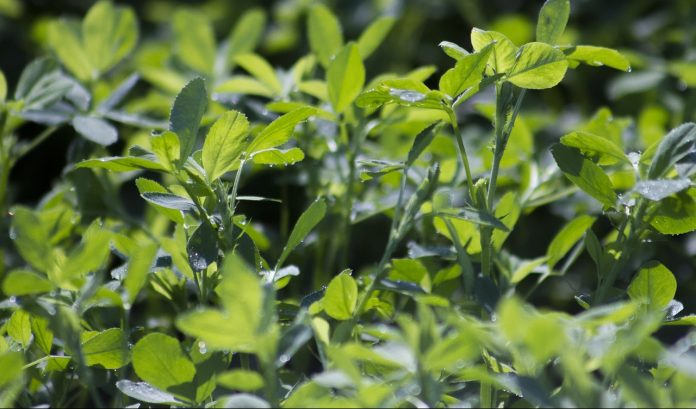MOUNT HOPE, Ohio — What if producers could improve forage yield potential by manipulating a plant’s own photosynthetic process?
John Kempf, founder of Advancing Eco Agriculture, a crop nutrition consulting company in Middlefield, said, “There is tremendous untapped potential that exists in forage production that growers have not yet realized.”
Kempf addressed farmers during the North Central Ohio Grazing Conference, Jan. 25-26 at the Mount Hope Event Center, to share research on how farmers can enhance a plant’s natural process to develop biomass.
Forage growth
He believes farmers are consistently harvesting 20-35 percent of what they are capable of and can improve that by jump starting the plants natural ability to create sugars — known as photosynthesis.
In order for photosynthesis to occur, plants need water, carbon dioxide, chlorophyll and light. Of these, Kempf said farmers can influence three of the four.
Water
“You can’t depend on the weather to provide adequate rainfall,” said Kempf. He suggests investing in an irrigation system.
Carbon dioxide
“Your forages have a tremendous amount of potential to absorb more carbon dioxide,” said Kempf.
Carbon dioxide is naturally released from organic matter. Having a strong soil profile can increase organic matter in the soil.
“We want to have abundant bacterial sources in the soil profile,” said Kempf.
Chlorophyll
The final factor in increasing forage growth is chlorophyll. How do you increase chlorophyll?
Kempf suggests it’s as easy as managing five key nutrients: Nitrogen, Magnesium, Iron, Manganese and Phosphorus.
Nitrogen, Magnesium and Iron are the nutrients that give plants their dark green color. “Iron is the pipe that pulls chlorophyll together,” said Kempf.
Manganese is a mineral that supports water hydrolysis — the process by which the plant spits water molecules to make chlorophyll.
Phosphorus is not a part of the photosynthesis process, however, it aids the plant in converting the sugars it makes into energy. If the plant is going to be making more sugar, it needs more energy to help convert those carbohydrates into biomass, said Kempf.
“It is that simple and yet it is that difficult because you need to manage it,” said Kempf.
By manipulating these factors, he believes farmers can increase forage production by four times as much as they are currently doing. It just takes a little more attention to detail.










